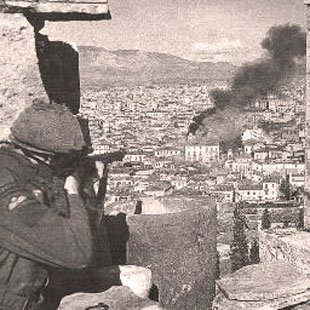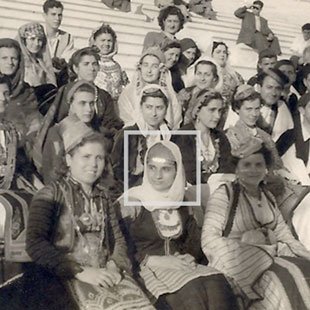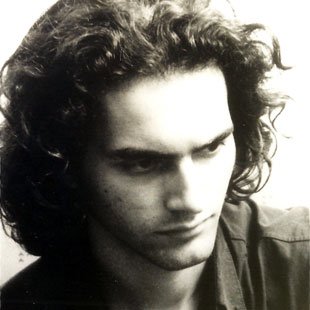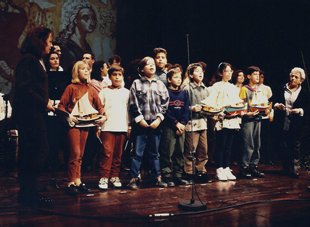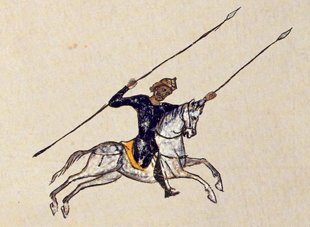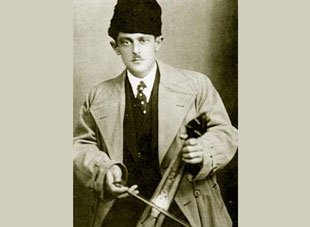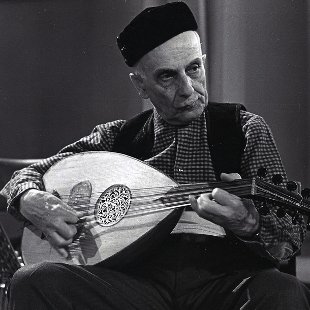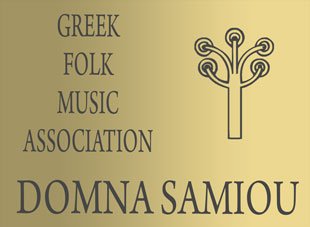You are at: Home page Her Work Discography In the Middle of the Sea
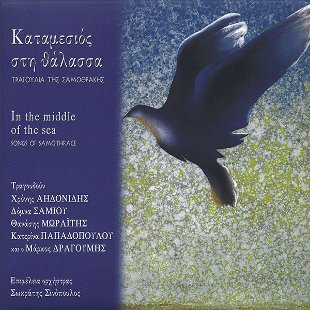
In the Middle of the Sea

Contents
Produced by Friends of the Melpo Merlier Music Folklore Archive. Unreleased recordings from manuscripts by Nikólaos B. Phardýs of the late 19th century (19 songs) and some recordings Markos Ph. Dragoumis made in 1961 (3 songs). Musical supervision by Socrates Sinopoulos.
Songs
-
1. Here Comes the Bride
Eastern Aegean More
-
2. The Groom's Time Has Come to Wed
Eastern Aegean More
-
3. Wedding Serenade
Eastern Aegean More
-
4. Damn You Oh Smyrna
Asia Minor More
-
5. By the Threshing Floor
Eastern Aegean More
-
6. There Was a Mother With Two Sons
Eastern Aegean More
-
7. One Only Heart in Not Enough (A)
Asia Minor More
-
8. Hatzigiannakis' Daughter
Eastern Aegean More
-
9. Yesterday in the Rain
Eastern Aegean More
-
10. One Only Heart Is Not Enough (B)
Eastern Aegean More
-
11. There She Comes, The Pretty Bride
Eastern Aegean More
-
12. I Try to Think of You No More
Asia Minor More
-
13. I Love a Lot My Little Bird
Eastern Aegean More
-
14. I Have Spent a Life Awaiting You
Eastern Aegean More
-
15. I Wish Both Good Morning
Eastern Aegean More
-
16. Neither in Polis nor in Asia
Asia Minor More
-
17. Right in the Middle of the Sea
Eastern Aegean More
-
18. The School Is on Fire
Eastern Aegean More
-
19. If Only We Could Meet
Eastern Aegean More
-
20. As I Turn and See Your Angle Face
Eastern Aegean More
-
21. Down There in the Island of Rhodes
Eastern Aegean More
-
22. I Heard You Saying, Didn't I?
Asia Minor More
- Production: Φίλοι του Μουσικού Λαογραφικού Αρχείου Μέλπως Μερλιέ
- Year of release: 2002
- Type: CD
- Production Country: Greece
Notes
In ancient times the splendour of Samothrace was fully related to the Great Gods and their Cult, that were equally renowned and shared many common features to the Eleusinian Mysteries. During the Middle Ages the island lost its significance and served as an exile place, as also in the very recent past. At the latest during the post-Byzantine Era, the residential area was transferred from Paliápole to Chora, which remained the most important village until around the 6th decade of the 20th century. Although the distance to the neighbouring Thracian coast is small, Samothrace was a remote place without regular transportation until very recently. Due to this isolation Samothrace became self-sufficient, focusing on agricultural products, mainly olive oil and cereals.
Samothrace flourishes economically and demographically in the late 18th and the beginning of the 19th century. At the dawn of the Hellenic revolution its population is estimated to be around 4000 residents. This prosperity ended very abruptly in 1821 when the ruling Turks totally destroyed the island because of the revolt of the people of Samothrace. 2000 residents are reported in 1855, slowly arising to 3500 at the beginning of the 20th century. Samothrace had little dependence upon Turkey since it actually continued to be self-sufficient and self-governed until its liberation in 1912. Around the end of the 19th and the beginning of the 20th century the Samothracean society becomes less and less isolated; the architecture of Chora with its influences from Thrace and NW Asia Minor and the development of a small bourgeoisie deriving its financial vigour from the cultivation and exploitation of olive trees bears evidence of this. A group consisting of the elders of the village known as demogérontes, who gathered all authorities during the time of the Turkish Empire, is elected from the landlords of this class. They continue to control the economy even after the liberation from the Turkish rule. Within this social and financial situation the relationships to the big urban centres are stabilised – mainly with Smyrna and Constantinople and a bit later (1912) with Piraeus.
“Born and raised” in Samothrace as he specifically writes about himself, Phardýs was a widely learned personality living in the end of the 19th century. He was a medical doctor though his contribution is detected in many different areas such as in linguistics, pedagogy, history-archaeology, literature and music. One of the most important books he wrote was his “Dissertation on writing Modern Greek without accents” and “A graduate high school lecture, that is a guide to all newcomers to society”. His historical and archaeological contribution concerns mainly Samothrace, especially at a time when the archaeological research of the island was of great significance. Similar is the impact of his work on literature, especially his prose writings on folklore – although his achievement in this field is limited. Anastássios K. Christomanos who visited Samothrace after the earthquake in 1893 very eloquently describes the figure of Phardýs: “Strange-looking face, serious and imposing, he had his full share of respect among the citizens; genial not any the less than gentle, at the same time he is the Mayor of Samothrace. And for his knowledge and wealth, even more for his supremacy over the rest of the population as a doctor and a gentleman with refined manners he is the true, absolute lord of this isle. With his irreproachable attire he could present himself in every city of Europe, while wearing the Turkish fez he could be taken for an important Turkish official newly arrived from Constantinople. And, I was surprised to listen to his purist use of the language and the fine phrasing with which he chose to speak, his versatility and his readiness to answer questions.”
However, what was the situation in Samothrace at the last quarter of the 19th century? In 1873 and 1875 the Austrian missions conducted by A. Conze carry out the first systematic excavations at the Temple of the Great Gods. Beyond its significance, the publication of the results of this work in two heavy volumes includes for the first time in any archaeological publication photographs of exceptional quality taken by A. Conze in 1873 and by the photographer of the Court in Vienna W. Burger in 1875. The latter gave his personal aspect through the photographs by inserting in the picture frame living people, usually labourers of the excavation serving as a measure to the monuments depicted in the photographs. Except for the photographs purely concerning the excavations, photographs of Chora and Paliápole can be found in the two-volume publication, giving valuable proof of Samothrace at the time before the earthquake in 1893.
1874-79. He goes to the Evangelic School of Smyrna while he continues his studies in music with Nikólaos, the first chanter in Smyrna
1879. He marries Assanió Frangomichale from Samothrace and they give birth to six children
1880-85. He studies medicine in Marseilles and works as a private tutor to homogenous rich families. He translates a French medical treatise. He co-operates with two periodicals, one in Smyrna, one in Athens, Anatolí and Sión correspondingly
1884. His Dissertation on writing Modern Greek without accents is published
1885-87. He teaches Greek to his native-language-speaking people in the village of Cargheze in Corsica (Karyés according to Phardýs)
1888. He returns to Samothrace where he practices medicine, he chants, he occupies himself with musicology and writes articles in newspapers and periodicals on literal, historical, archaeological, religious, linguistic, folklore, numismatic, geologic and medical issues.
1889. Greeks in Corsica and his second book on non-accented writing are published
1890 and so. He participates in various Greek and foreign scientific societies (Société pour l’Encouragement des Études Grecques, German Imperial Archaeological Institute, Hellenic Literary Society of Constantinople (H.L.S.C.) and Hellenic Musical Society of Constantinople (H.M.S.C.)
1895. H.L.S.C. awards him a prize for his first music folklore collection (Zográfeios Agón)
1898. He publishes a School Lecture giving advice to newcomers to society
1899. H.L.S.C. gives an award to his second music folklore collection – He breaks his relationship with the H.L.S.C.
1900. H.L.S.C. gives him an award for his setting of an hymn in honour of Άghios Ioánnis Damaskinós (St. John the Damascene)
1901. He dies in Samothrace.
It took a long time for this research to bear fruits, but eventually it lead to the discovery of several other sources which I cite in my book 85 Demotic Melodies from the manuscripts of Nikólaos B. Phardýs (an edition of the Music Folklore Archive, Athens 1991), where all the material published is transcribed from the byzantine-chrysanthine musical notation into the staff system.
Now, ten years after this edition, I get the opportunity to improve some of my transcriptions by rendering them not in the occasionally hasty way they were put down by Phardýs, but rather more freely always according to the true spirit of this type of music.
A ternary measure that was unnecessary was omitted from no. 6. In agreement with Domna Samiou, no. 7 was given the nine-beat measure of the karsilamás instead of that implied by Phardýs. After a suggestion made by Socrates Sinópoulos, no. 13 was divided in a new way so that a unified time signature could be applied (2/4) to the whole song. It is due to this change that the melody acquired a light mood and its dancelike character was revealed. The same happened with no. 14. At this point I should mention that songs no. 2, 17 and 18 do not come from Phardýs’ collections, but from recordings I made myself in Samothrace in 1961. Of these songs no. 2 is listed as no. 46 in my book but with different lyrics; and the other two (no. 17 and 18) are certainly old songs that must have been circulating at least one century before the birth of Phardýs. This applies definitely to no. 18, the melody of which has been traced in a Turkish source of the 17th century.
In general, all songs included in the cd, except for those relating to the ceremony of the Samothracean wedding (no. 1-3, 5, 9, 11) have a strong scent of the Aegean and particularly of Smyrna, while at the same time we could say that nos. 4, 7, 12, 16 and 18 (and probably a few more) could be considered as early rebetika songs.
Concluding, I would like to say how much the release of this cd pleases me, since it gives flesh and blood to Phardýs’ musical transcriptions, and my attempts to renotate and publish them.
Finally, I would like to thank all the colleagues who worked for this publication, for their passion and knowledge and to express my appreciation to the Mayor of Samothrace, Mr. Geórgios Hanós, and to Mr. Demétrios Matsas for their interest in cultural matters.
In the year 2000, Domna Evnouchidou asked me to give a concert that would include some of the above songs. I accepted out of respect towards her and appreciation to her art (while at the same time I was saying to myself “I’ll see what I shall do”). Yet nothing happened because I didn’t have the time to get prepared since I had other commitments.
The following year Demétrios Matsas, the archaeologist, asked me to undertake the production of a cd in which I would sing the afore-mentioned songs. Demétrios Matsas and the Mayor of Samothrace, Geórgios Hanós placed on me a discrete though continuous pressure and here is the result.
Reading again Markos’ dedication, I remember the first impression the songs made on me and I feel ashamed. I listen to these wonderful and uniquely gentle voices, I listen to Chronis Aedonides, Domna Samiou and to the younger Katerina Papadopoulou and the way their singing is dipped into ethos; I listen to the elegiac way of playing of the instrumentalists guided by Socrates Sinopoulos, one of the most important musicians of his generation, and I take pride. Does anyone need more to feel that we never cease to learn?
Credits
Production team
- Thanassis Moraitis (Επιμέλεια ενθέτου, παραγωγής, έκδοσης ),
- Socrates Sinopoulos (Musical supervision)
Booklet team
- Markos Ph. Dragoumis (Texts and commentaries),
- Thanassis Moraitis (Texts and commentaries),
- Thanassis Moraitis (Text Editing)
Singer
- Domna Samiou (The Groom's Time Has Come to Wed, One Only Heart in Not Enough (A), I Have Spent a Life Awaiting You, Down There in the Island of Rhodes),
- Chronis Aidonidis (Down There in the Island of Rhodes, Here Comes the Bride, There Was a Mother With Two Sons, Yesterday in the Rain, I Wish Both Good Morning, The School Is on Fire, As I Turn and See Your Angle Face),
- Markos Ph. Dragoumis (I Love a Lot My Little Bird),
- Thanassis Moraitis (Down There in the Island of Rhodes, Damn You Oh Smyrna, Hatzigiannakis' Daughter, One Only Heart Is Not Enough (B), I Try to Think of You No More, Neither in Polis nor in Asia, If Only We Could Meet, I Heard You Saying, Didn't I?),
- Katerina Papadopoulou (Down There in the Island of Rhodes, Wedding Serenade, By the Threshing Floor, There She Comes, The Pretty Bride, Right in the Middle of the Sea)
Choir
Violin
- Yiorgos Marinakis (The Groom's Time Has Come to Wed, One Only Heart in Not Enough (A), I Have Spent a Life Awaiting You, Here Comes the Bride, Wedding Serenade, By the Threshing Floor, There Was a Mother With Two Sons, Hatzigiannakis' Daughter, Yesterday in the Rain, One Only Heart Is Not Enough (B), There She Comes, The Pretty Bride, I Try to Think of You No More, I Love a Lot My Little Bird, I Wish Both Good Morning, Neither in Polis nor in Asia, Right in the Middle of the Sea, The School Is on Fire, If Only We Could Meet, As I Turn and See Your Angle Face, I Heard You Saying, Didn't I?)
Violoncello
Constantinopolitan lyra
Kanun
Constantinopolitan lute
- Socrates Sinopoulos (The Groom's Time Has Come to Wed, One Only Heart in Not Enough (A), I Have Spent a Life Awaiting You, Down There in the Island of Rhodes, Here Comes the Bride, Wedding Serenade, Damn You Oh Smyrna, By the Threshing Floor, There Was a Mother With Two Sons, Hatzigiannakis' Daughter, Yesterday in the Rain, One Only Heart Is Not Enough (B), There She Comes, The Pretty Bride, I Try to Think of You No More, I Love a Lot My Little Bird, I Wish Both Good Morning, Neither in Polis nor in Asia, Right in the Middle of the Sea, The School Is on Fire, If Only We Could Meet, As I Turn and See Your Angle Face)
Lute
- Kyriakos Tapakis (The Groom's Time Has Come to Wed, One Only Heart in Not Enough (A), I Have Spent a Life Awaiting You, Down There in the Island of Rhodes, Here Comes the Bride, Wedding Serenade, Damn You Oh Smyrna, By the Threshing Floor, There Was a Mother With Two Sons, Hatzigiannakis' Daughter, Yesterday in the Rain, One Only Heart Is Not Enough (B), There She Comes, The Pretty Bride, I Try to Think of You No More, I Love a Lot My Little Bird, I Wish Both Good Morning, Neither in Polis nor in Asia, Right in the Middle of the Sea, The School Is on Fire, If Only We Could Meet, As I Turn and See Your Angle Face, I Heard You Saying, Didn't I?)
Goblet drum
- Kostas Meretakis (Damn You Oh Smyrna, By the Threshing Floor, Yesterday in the Rain, One Only Heart Is Not Enough (B), I Try to Think of You No More, Neither in Polis nor in Asia, As I Turn and See Your Angle Face)
Bendir (frame drum)
- Kostas Meretakis (The Groom's Time Has Come to Wed, One Only Heart in Not Enough (A), I Have Spent a Life Awaiting You, Down There in the Island of Rhodes, Here Comes the Bride, Wedding Serenade, Damn You Oh Smyrna, There Was a Mother With Two Sons, Hatzigiannakis' Daughter, There She Comes, The Pretty Bride, I Love a Lot My Little Bird, I Wish Both Good Morning, Right in the Middle of the Sea, The School Is on Fire, If Only We Could Meet)
Glasses
- Kostas Meretakis (One Only Heart in Not Enough (A), One Only Heart Is Not Enough (B), I Try to Think of You No More)
Zil bells
- Kostas Meretakis (I Have Spent a Life Awaiting You, Down There in the Island of Rhodes, There She Comes, The Pretty Bride, I Love a Lot My Little Bird, Neither in Polis nor in Asia)
